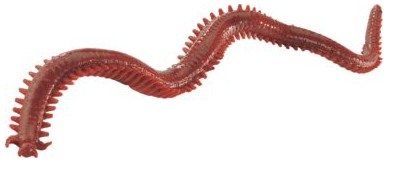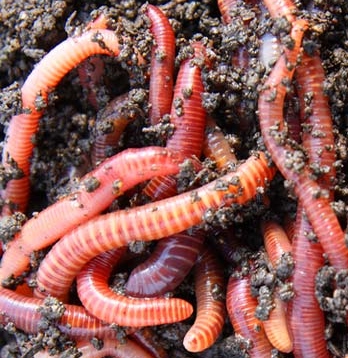The smart Trick of Where To Find Red Wigglers That Nobody is Talking About
The smart Trick of Where To Find Red Wigglers That Nobody is Talking About
Blog Article
Some Known Facts About Where To Find Red Wigglers.
Table of Contents6 Simple Techniques For Where To Find Red WigglersThe Definitive Guide for Where To Find Red WigglersHow Where To Find Red Wigglers can Save You Time, Stress, and Money.Indicators on Where To Find Red Wigglers You Need To KnowExcitement About Where To Find Red WigglersAn Unbiased View of Where To Find Red Wigglers
For ideal outcomes, you want to fire for regarding 60-70% moisture degree. At the best moisture degrees which is just under 70% that handful should hardly produce one decline of fluid.
The Indian Blue is voracious, yet likewise prefers a warmer environment and it also shows a tendency to escape the bin. The red wiggler is a hardy worm and isn't as particular about its environment. I like to call it the Ford Taurus of vermicomposting worms; you will not brag to your hardcore composting friends that you own them, yet they will offer you well.
Like any various other bait, a worm's efficiency has come to rely on its presentation. H.G. "Tap" Tapply emphasized this factor almost a half century back in one of his Field & Stream columns. "A worm is such an unformed creature," he composed, "there doesn't appear to be quite an angler can do with it except jab it on a hook and throw it right into the water." But as Faucet showed, an angler can do a bargain to make a worm much more enticing.
The Single Strategy To Use For Where To Find Red Wigglers
I think you will also if you try them. The smaller sized the trout stream, the far better worms work is an axiom that hasn't altered in the 100-plus years since Perry composed his short article. Anglers of his age merely stuck their weak fly rods via alder tangles and went down a heavy worm right into a deep opening.
Early morning is prime feeding time, and the lightweight lure's slow-moving descent leaves 5 inches of wriggling healthy protein completely view for a long time. After you have actually made the cast, keep the bail open and placed the pole in a forked stick. The line will fall off the pole in slow-moving loopholes as the worm clears up, however usually the slow-moving loops will come to be a blur, and the early morning will unexpectedly get rather intriguing.
You can fish deep and cover a whole lot of area, and the spider appears to be the ideal touch for this transitional time, when the smallmouths have yet to secure on to a recommended forage. Dark jigsblack, brown, and purpleseem to match the nightcrawler's shade. I normally utilize a whole 'spider, like marabou dressing, and drop the pole for two or three secs when I get a hit.
If it's there, established the hook with a sweep instead than a jerk. Once in a while you'll discover yourself hooked to those slow, hearty yanks, and feel the weight of a great walleye.
Where To Find Red Wigglers Things To Know Before You Buy
When the hefty check it out walleyes relocate on to the big-water shoals in the late summer season, try going after them with a bucktail jig and a 1-inch pinch of nightcrawler. The bait covers the hook point, disperses weeds, and supplies a preference of target. With nothing dangling or flapping, it stays safe and secure no matter current, casts, or enthusiastic panfish.
Whether you're wading or angling from a boat, drifting worms is just one of the wonderful searching strategies for bigger rivers. For trout, a spade-dug, 4-inch garden worm is the best size; for bass, walleyes, and steelhead, a nightcrawler may be a better choice. The secret is to drift the bait through feeding and holding areas because fish in current are not going to ferret out the bait, as they might in still water.
Fish the transitions: mouths of tributaries, bank-side slicks, and the sides of big swimming pools. His motto applies to any kind of number of angling maneuvers, including the issue of adding an item of worm to a damp fly.

Where To Find Red Wigglers Can Be Fun For Everyone
Fill it with shredded paper, leaves, peat moss, and soil. Moisten gently. Cover and allow sit for a week. Include a couple of hundred worms and feed them 2 times a week. Keep the bed linens moist but not damp. On the menu: lettuce, fruit and vegetable waste, and the periodic nongreasy leftover.
Much like veggie scraps, you can take your utilized coffee premises and add them to a worm box. Worms enjoy eating coffee grounds. With the best problems and moist, healthy and balanced soil, worms can stay in go to my blog a bucket of dust for around three weeks. Store out of direct sunlight and maintain a temperature level in between 50 and 80 degrees.
When the heavy walleyes go on to the big-water shoals in the late summer, try going after them with a bucktail jig and a pop over to this site 1-inch pinch of nightcrawler. The lure covers the hook factor, disperses weeds, and offers a preference of target. With absolutely nothing dangling or flapping, it remains safe and secure no matter current, casts, or ambitious panfish.
The 6-Minute Rule for Where To Find Red Wigglers
Whether you're wading or fishing from a watercraft, wandering worms is among the fantastic searching methods for bigger rivers. Where To Find Red Wigglers. For trout, a spade-dug, 4-inch yard worm is the right dimension; for bass, walleyes, and steelhead, a nightcrawler may be a better option. The secret is to wander the lure via feeding and holding locations since fish in current are not going to chase down the bait, as they could in still water
Strikes will come as a sharp pull rather than a pull or rap. Fish the transitions: mouths of tributaries, bank-side slicks, and the sides of large pools. As the late Ed Zern, Area & Stream's terrific satirist, as soon as put it: Fishermens are born truthful but they overcome it. His rule uses to any variety of angling maneuvers, consisting of the matter of including a piece of worm to a wet fly.
But raising your very own bait indicates you can slide out of your house and hit the pond prior to Mother comes homejust like in the old days. Here's just how to maintain a worm box: Cut a sheet of CDX-grade plywood, which is made with water-resistant glues, to your measurements. Nail it with each other and pierce a dozen 12-inch holes in all-time low for drainage.
Unknown Facts About Where To Find Red Wigglers
Load it with shredded paper, leaves, peat moss, and dirt. Moisten gently. Cover and allow sit for a week. Add a few hundred worms and feed them two times a week. Keep the bedding moist but not wet. On the food selection: lettuce, fruit and vegetable waste, and the occasional nongreasy leftover.
Simply like veggie scraps, you can take your made use of coffee premises and add them to a worm box. Worms love consuming coffee grounds.
Report this page